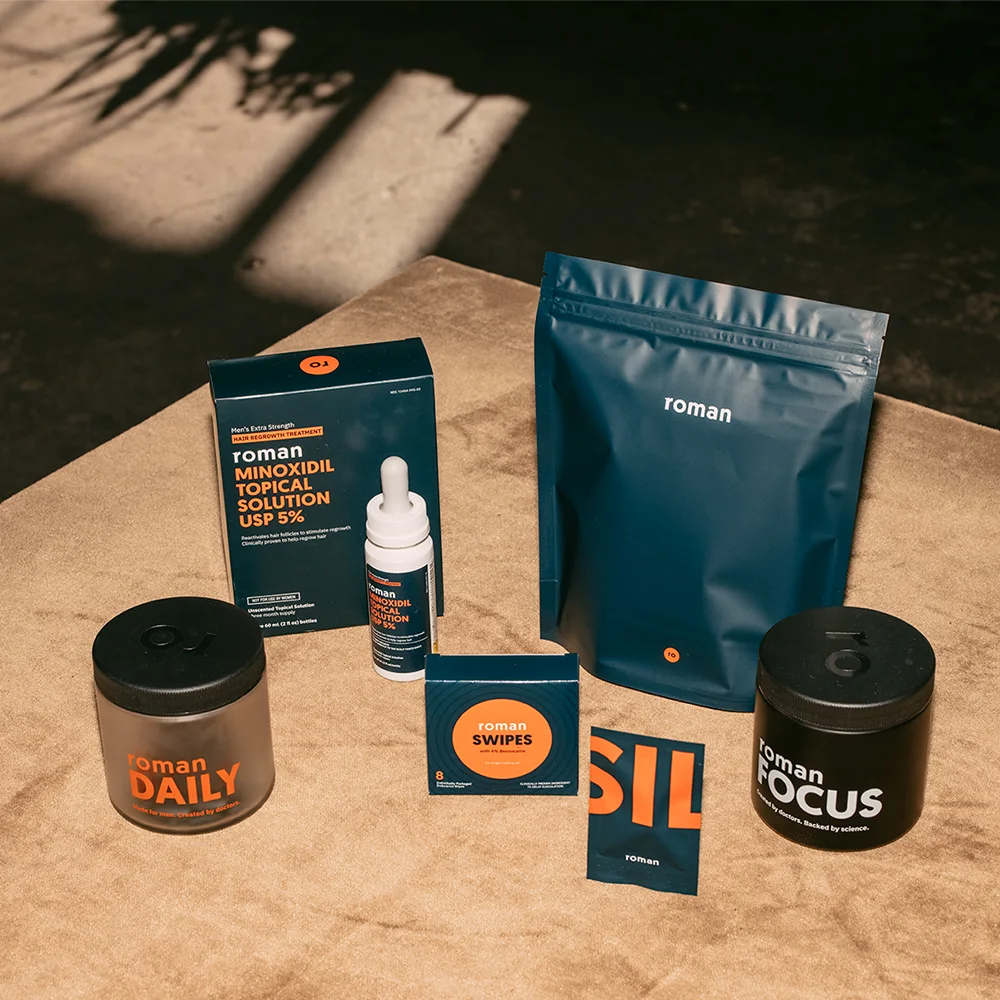Here's what we'll cover
Here's what we'll cover
Here's what we'll cover
You may think that anal sex is a no-brainer, or you may be totally perplexed and a little intimidated by it. In this article we’ll give the simple breakdown of what anal sex is, how to prepare for anal sex, how to enjoy it, and how to give or receive anal sex safely.
What is anal sex?
Anal sex usually refers to penile-anal penetration, but it can actually include other body parts or objects.
For example, anal play can also include penetration with sex toys (like a dildo, vibrator, or a strap-on) or a partner’s fingers or tongue. Some even find it to be more ideal (not to mention more enjoyable) when anal sex includes a combination of these—more on this later.
During anal sex, one person is generally “top” (the person doing the penetrating, also called the penetrative partner), and one person is “bottom” (the person being penetrated, also called the receptive partner). Though many people tend to stay in one role, it can also be changed up over the course of sex or within a couple’s sex life (Wei, 2011).
What does anal sex feel like?
As you might expect, many people find anal sex intensely pleasurable and arousing. If you’re the receptive partner, you may experience an unusual sense of fullness. At first, you may also feel the need to have a bowel movement—which makes sense since that’s the setting in which your anus is typically being stretched. Don’t worry; it’s very unlikely you’ll poop.
Full disclosure: if you’re the receptive partner, it may be uncomfortable or even painful if it’s your first time. This is pretty common but can usually be resolved by taking it more slowly and using more lube (Štulhofer, 2013). However, if the pain doesn’t stop, take a break from sex and go back to foreplay for a while—you should not be in continual pain during anal sex.
Who can have anal sex?
Anyone who wants to! Anal sex is not a sex act reserved just for gay or bisexual men, as is sometimes stereotyped. It can be a healthy and routine part of the sex life of all kinds of couples of any gender or orientation.
Men, women, and non-binary people (both cisgender and transgender) of every sexual orientation enjoy anal sex—and it’s nothing new. Anal sex has been around for millennia; it’s been depicted in ancient art and literature everywhere from ancient Greece to Japan to Peru (McBride, 2010).
Some people even use it to manage a physical or medical issue. For example, women sometimes use anal sex as an alternative to vaginal sex if they experience pain during vaginal intercourse (a common condition sometimes called vulvodynia or vaginismus), don’t have a vagina, or don’t want to get pregnant.
Should I try anal sex?
If you want to have anal sex, then go for it!
With that being said, it’s a bad idea to have anal sex (or any other kind of sex) because your partner is pressuring you or if you think they won’t be happy without it.
Unless you are genuinely interested in and comfortable with anal sex, it would be coercive—even abusive—for your partner to try to convince you. It may be that you’re afraid to say no, in which case you should contact one of several free, safe, confidential support systems like the National Domestic Violence Hotline at www.thehotline.org.
Risks of anal sex
Like any sexual activity, anal sex comes with some health risks. The most common ones are risks of sexually transmitted infections (STIs) and pain and bleeding.
But with proper, responsible precautions, it’s easy to reduce these risks and ensure you can enjoy anal sex safely.
Sexually transmitted infections
STIs, including gonorrhea, chlamydia, genital herpes, and HIV, are a risk with anal sex—even higher than with vaginal sex (Lee, 2021).
In fact, anal sex is the riskiest kind of sex for transmitting HIV for both heterosexual couples and men who have sex with men (MSM). Receptive anal sex is riskier for getting HIV than penetrative anal sex (CDC, 2021).
This is partly because the tissue of the rectum is relatively fragile and doesn’t self-lubricate; tiny tears in it (which can happen even if you’re gentle and take it slow during anal play) can give viruses direct access to your bloodstream. The lining of the anus and rectum is also porous, and viruses can easily get through it (CDC, 2021). To reduce this risk, it’s essential to wear condoms during anal sex or for both monogamous partners to first test for STIs and HIV.
Another way to reduce your risk of HIV is to consider PrEP or pre-exposure prophylaxis. It’s an HIV prevention strategy that can reduce the risk of HIV transmitted through sex by 99% if followed correctly (CDC, 2019).
Bleeding
Another risk of these small tears in the rectum (called anal fissures) is bleeding. A tiny bit of bleeding after anal sex may be expected if it’s your first time on the receiving end of anal sex. Still, if you aren’t sufficiently relaxed or lubricated, there’s a risk of larger fissures and more bleeding. Fortunately, anal fissures do tend to resolve on their own within a few weeks, but it can be an uncomfortable process.
Other risks of anal sex
Finally, going back and forth between vaginal, anal, and oral sex can spread bacteria and lead to UTIs or gastrointestinal problems. If you don’t want to interrupt sex to put on a new condom or wash your sex toy or penis, having anal sex after vaginal sex can help prevent urinary tract infections.
How to have anal sex
Anal sex may sound intimidating, but it’s a pretty simple and intuitive process. You can maximize the fun and minimize any issues by making sure to relax, start slow, use plenty of lube, and communicate with your partner.
Preparing for anal sex
Make sure you talk to your partner about anal sex beforehand so that you can be clear that you both genuinely want to try it and that you know each other’s ideas and comfort zones.
One expectation to make sure you’re clear on: a small amount of poop is both possible and normal during anal sex. It’s not a big deal and is easy to deal with—you can even hop into the shower together.
But it may be reassuring to know that poop only passes through the rectum and isn’t stored there (it’s stored much higher in the colon—an area you would never reach during anal sex). Some fecal matter may be left behind, but it shouldn’t be much.
In any case, engaging in some good anal hygiene beforehand is a good idea—taking a shower and paying thorough attention to your anus is a good baseline.
Many people also choose to do some internal cleaning—or anal douching. It’s not necessary, but you certainly can do it if it makes you feel more comfortable and relaxed. An enema bulb is specifically designed for cleaning out the rectum (just be sure to do it gently and slowly so that you don’t damage your rectal tissue). It’s also helpful to make sure your fingernails are cut and filed smoothly.
Also, make sure you stock up on sexual lubricant (there are specialty brands made for anal sex) and several condoms. If you’re using any silicone sex toys, check to ensure they’re safe to use with your lube.
Getting started
Making sure that the receiving partner’s sphincter muscles are relaxed is key to anal sex, which may take some time.
The anal sphincter is the muscle that helps to control gas and bowel movements and is usually tensed. It’s essential to help it relax for a person to safely and comfortably accept a penis or dildo into their anus. You can do this with massage, kissing, and gently caressing the anus with a lubricated finger.
The anus doesn’t produce any lubricant, so be sure to use plenty of lube. Gently insert some lube with a finger, and continue to apply it periodically as you work your way up to penetration with a penis or sex toy.
Penetrate your partner a little, then withdraw to reapply more lube before continuing and penetrating a little further. Keep communicating to find out when your partner is ready for more and make sure they aren’t in pain.
After sex, or at whatever point you take a break or decide to stop, make sure that the inserting partner withdraws their penis or toy slowly; doing it quickly can hurt the receiving partner or even damage their tissue (Taormino, 2006).
Anal sex positions
Classic “doggy style” positions are popular for anal sex (especially in porn), but they are not the only option. Everyone has unique anatomy and desires, so experiment with what works for you and your partner (Taormino, 2006).
Here are a few good anal sex positions to try:
Missionary and reverse-spooning positions can be a great way to ensure good face-to-face communication and help the bottom partner control the depth and pace of penetration.
Classic spooning isn’t face-to-face but is flexible and easy to maneuver and can be great for partners of very different heights.
Receiving-partner-on-top is the best way for the recipient to control the depth of penetration. They straddle the insertive partner and can sit forward, backward, and as deeply-penetrated as they desire. The face-to-face aspect of this position is great for communication and clitoral or penile stimulation of the receiving partner.
Being on all-fours (doggy style) allows for the deepest anal penetration. Either the insertive or the receptive partner can control the depth and speed, and the position makes it easy for the receptive partner to reach around and masturbate.
After anal sex
Anal sex is intense and personal, and afterward, it’s normal to feel a little emotionally vulnerable, especially if you aren’t used to it. Talk, check-in, see what your partner liked and disliked, and decide if it’s something you want to do again.
It’s also a good idea to clean up promptly—again, maybe a nice time to hop in the shower together—to wash off lube and bacteria. If you were the receiving partner, it’s normal for your anus to feel a little more open or loose at first, but it should go back to normal after a few minutes.
If you’re bleeding or in pain, try a sitz bath: fill up the tub or a specialized bowl that you place beneath the toilet seat and soak your bottom for a few minutes. This helps increase circulation, relieves swelling, and can speed up healing if your anus is tender.
If pain continues, you may have an anal fissure, and you should talk to your healthcare provider. Continuing daily sitz baths, taking a stool softener, eating a high fiber diet, and avoiding straining on the toilet can help with healing (Jahnny, 2021).
Quick tips for enjoying anal sex safely
To summarize, here are six key tips on how to have safer, more enjoyable anal sex:
Communicate openly with your partner in advance
Shower beforehand, and consider douching if you’re the receptive partner
Wear a condom and consider PrEP
Use plenty of lube
Enjoy lots of foreplay to help the receiving partner’s anus to relax
Take it slow and check in frequently
If both partners agree to it, anal sex can be a great tool for intimacy and pleasure. By following the key tips above, you can protect your sexual health and ensure that anal sex is a great experience for both partners.
DISCLAIMER
If you have any medical questions or concerns, please talk to your healthcare provider. The articles on Health Guide are underpinned by peer-reviewed research and information drawn from medical societies and governmental agencies. However, they are not a substitute for professional medical advice, diagnosis, or treatment.
References
Baggaley, R. F., White, R. G., & Boily, M. C. (2010). HIV transmission risk through anal intercourse: systematic review, meta-analysis and implications for HIV prevention. International Journal of Epidemiology, 39 (4), 1048–1063. doi: 10.1093/ije/dyq057. Retrieved from https://www.ncbi.nlm.nih.gov/pmc/articles/PMC2929353/
Centers for Disease Control and Prevention (CDC). (2021). Anal sex and HIV risk . Retrieved Feb. 8, 2022 from https://www.cdc.gov/hiv/risk/analsex.html
Centers for Disease Control and Prevention (CDC). (2019). HIV: HIV risk and prevention: Pre-exposure prophylaxis (PrEP) . Retrieved on Feb. 8, 2022 from https://www.cdc.gov/hiv/risk/prep/index.html
Jahnny, B. & Ashurst, J. V. (2021). Anal fissures. [Updated Nov. 21, 2021]. In: StatPearls [Internet]. Retrieved from https://www.ncbi.nlm.nih.gov/books/NBK526063/
Lee, A., Gaither, T. W., Langston, M. E., Cohen, S. E., & Breyer, B. N. (2021). Lubrication practices and receptive anal sex: Implications for STI transmission and prevention. Sexual Medicine , 9 (3), 100341. doi: 10.1016/j.esxm.2021.100341. Retrieved from https://www.sciencedirect.com/science/article/pii/S2050116121000210
McBride, K. R. & Fortenberry, J. D. (2010). Heterosexual anal sexuality and anal sex behaviors: a review. Journal of Sex Research, 47 (2), 123-36. doi: 10.1080/00224490903402538. Retrieved from http://www.rectalmicrobicides.org/docs/Heterosexual%20Anal%20Sexuality_Mcbride%20Fortenberry.pdf
Štulhofer, A. & Ajduković, D. (2013). A mixed-methods exploration of women’s experiences of anal intercourse: meanings related to pain and pleasure. Archives of Sexual Behavior , 42 (6), 1053-1062. doi: 10.1007/s10508-012-0068-7. Retrieved from https://link.springer.com/article/10.1007/s10508-012-0068-7
Taormino, T. (2006). The ultimate guide to anal sex
for women. Retrieved Feb. 8, 2022 from http://diadmo.free.fr/TOOLS/Cours%20pdf/Loisirs/Taormino,%20Tristan%20-%20The%20ultimate%20guide%20to%20anal%20sex%20for%20women.pdf
Wei, C. & Raymond, H.F. (2011). Preference for and maintenance of anal sex roles among men who have sex with men: sociodemographic and behavioral correlates. Archives of Sexual Behavior, 40 (4):829-34. doi: 10.1007/s10508-010-9623-2. Retrieved from https://pubmed.ncbi.nlm.nih.gov/20464471/










